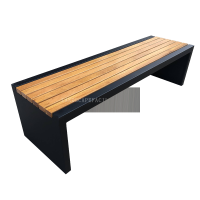Welcome to the website for landscape facilities products and knowledge.
How does the design account for easy integration with outdoor privacy screens or partitions?
Modern outdoor furniture design prioritizes seamless integration with privacy screens through several innovative approaches. The fundamental principle lies in modular compatibility, where manufacturers create standardized connection points that accommodate various screen types. Many contemporary collections feature built-in channels or discreet mounting hardware that remains invisible when not in use, allowing homeowners to add partitions without visible mechanical components.
Designers typically employ universal mounting systems that work across different materials - from wooden lattice panels to tempered glass dividers. These systems often incorporate adjustable brackets that compensate for minor dimensional variations between different screen manufacturers. The integration points are strategically placed at structural junctions where added weight won't compromise furniture stability, while allowing screens to be positioned at various angles according to privacy needs.
Material continuity represents another crucial consideration. Leading outdoor collections offer privacy screens in identical finishes and materials as the primary furniture pieces, creating visual harmony. For instance, aluminum frames might feature identical powder-coating colors, while wooden elements maintain consistent staining or weathering treatments. This attention to detail ensures added partitions appear as original design elements rather than afterthought additions.
Practical integration also addresses environmental factors. Drainage channels are incorporated into connection points to prevent water accumulation, while UV-resistant polymers in joining mechanisms ensure long-term durability. The most sophisticated systems allow for seasonal screen installation and removal without tools, featuring clever latch mechanisms that maintain structural integrity during windy conditions while permitting easy reconfiguration.
Beyond physical attachment, designers consider visual permeability and spatial flow. The best integration solutions maintain an open feel while providing privacy, using strategic spacing between screen elements and coordinating with overarching landscape design principles. This holistic approach transforms basic privacy screens into architectural elements that enhance both functionality and aesthetic appeal of outdoor living spaces.
Related search:

Recommendation
Modern Stainless Steel Begonia Wood Park Chair Outdoor Courtyard Leisure Sun Protection Bench Long Seat